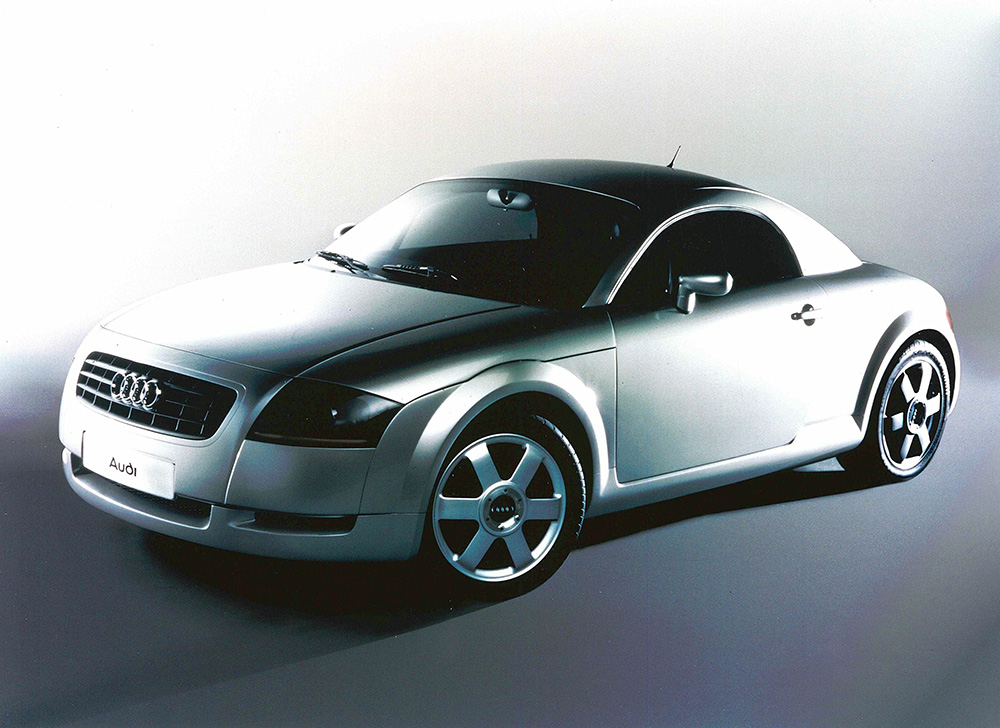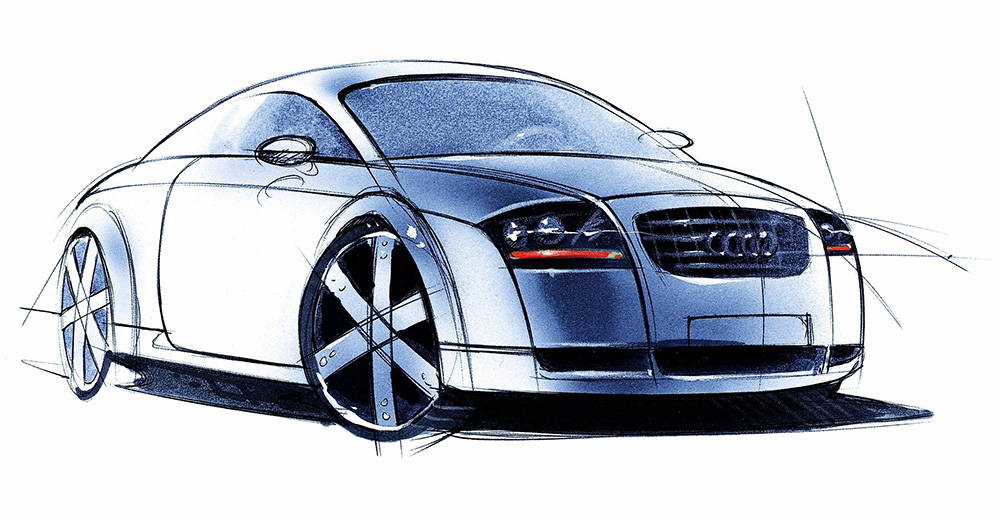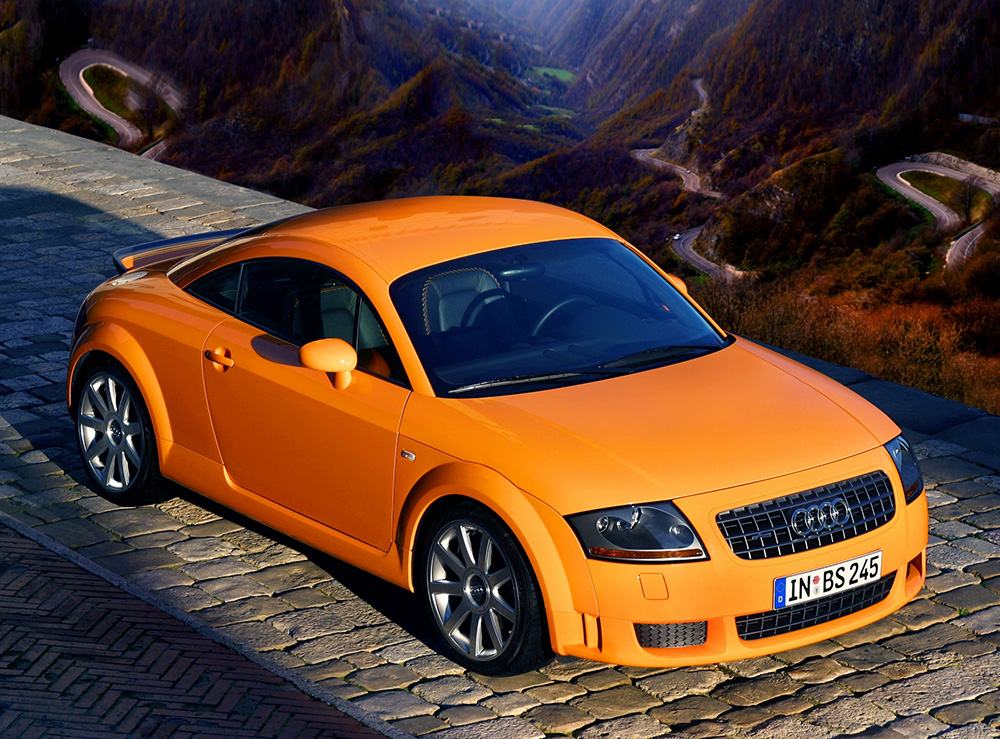Why the Audi TT is a modern-day design icon
If there’s one car that encapsulates the mood of the millennium era, surely it has to be the original Audi TT. Over the years, it’s become something of an icon: a topic that’s been covered more times than John Lennon’s Imagine, a shape so recognisable it could be picked out in a busy car park by even the most unenthusiastic four-wheel cynic.
Today, for as little as £3,000, you can find a decent Mk1 TT to cherish for years to come – and that’s not a lot of cash in exchange for one of the most celebrated car designs in recent history.

Credit: Audi AG
A tidy TT will still turn heads today, although nothing compares to the impact it created at the time of its debut in the late 1990s. Audiences were stunned when the cover was lifted from the original TT concept at the 1995 Frankfurt Motor Show, the glowing reaction immediately giving Audi the confidence to push the project on as waiting lists grew in anticipation.
The TT’s fuss-free, geometric styling screamed Bauhaus influence from the rooftops and is largely credited to Freeman Thomas, a German-American designer whose previous work included Volkswagen’s ‘New’ Beetle. Working out of VW Group’s Californian Design Centre at Simi Valley, Thomas’ design was an exercise in minimalism that unashamedly referenced the German design movement of the 1920s and ‘30s.

Credit: Audi AG
But when the production TT arrived in 1998, it looked like there may have been a mistake. Aside from some minor adjustments to the glasshouse, the styling was so faithful to the original concept it looked as though all Audi had done with the Frankfurt show car was slap on a pair of numberplates. The reaction was palpable - it was clear that Ingolstadt was onto a winner.
The first 1,000 UK customer allocations were sold long before they reached the docks and, for a while, the Audi TT became the car of the moment. Audi’s canny product managers were quick to secure prime product placement on the big screen, with the roadster variant starring alongside Tom Cruise and Thandie Newton in the 2000 blockbuster ‘Mission: Impossible 2’. By the time Hugh Grant climbed behind the wheel in noughties rom-com ‘About A Boy’, the car was a bona fide celebrity.
Few cared that the TT shared its platform with the sober fourth-generation Volkswagen Golf. This was a masterclass in badge engineering and the model’s success spoke for itself.

Credit: Audi AG
Thirty years on, the original TT is looking better than ever – so why does it remain so affordable? The answer lies in how popular it was when new. Over 180,000 were sold between 1998 and 2006 and, thanks to Audi’s bulletproof build quality, many examples are still on the road. The sheer quantity of TTs available has kept a lid on values for a while now, although that could be about to change.
After 25 years as a cornerstone of Audi’s model line-up, the company has recently announced it won’t replace the third-generation model when production ceases later this year. As Beanie Babies billionaire Ty Warner proved in 1999, discontinuing a product doesn’t always send its value into the stratosphere… but we think the TT could be a little different.
Look at the values of other iconic models like the BMC Mini and Jaguar E-Type and you’ll notice how the earliest examples have become some of the most collectable – so it’s not unreasonable to predict the original TT could one day head in the same direction of fellow design classics.
The fact that the TT also offers excellent performance, neat handing and fantastic build quality also makes it a perfect candidate for a modern classic daily driver. So, which should you go for?

Credit: Audi AG
The earliest cars were all equipped with the same 1.8-litre, turbocharged 20-valve engine in either 180 or 225 specification, underpinned by Audi’s famed quattro all-wheel drive system. Collectors will likely favour a pre-2000 model – and if you can find one without the rear spoiler which almost all TTs were fitted with after a safety recall during the late 1990s, you’ll be onto a winner.
In 2003, the range-topping V6 model made its debut using the same 3.2-litre engine as the Golf R32, with a choice of manual gearbox or VW Group’s all-new double clutch DSG gearbox. Although the V6 offers similar performance to the 225 model, the soundtrack of that famed VR6 engine offers a very different driving experience. An entry level 150 spec was also available with front-wheel drive, although this won’t offer the same performance as its bigger brothers.
At the top of the tree, there’s the limited edition ‘quattro Sport’, released in 2005 to mark the end of the first-generation model. This uses a hotter 240bhp version of the 20-valve turbo, with a stripped out interior, optional Recaro bucket seats and a phantom black roof. Only around 800 of these were sold in the UK and you’ll need up to £15,000 to secure a good one.
The classic car market will always be unpredictable, but you can be sure of one thing - the original TT won’t be getting any cheaper. Get your hands on a good one and it’ll be a sure-fire modern classic you can enjoy every day.
Do you think the Audi TT is a modern-day design icon? Let us know your opinions in the comments below.

COMMENT